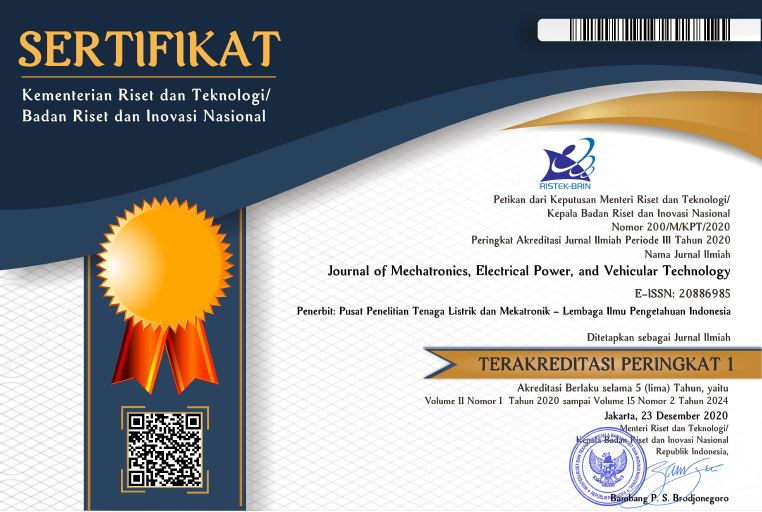Learning Efficiency of Consciousness System for Robot Using Artificial Neural Network
Abstract
This paper presents learning efficiency of a consciousness system for robot using artificial neural network. The proposed conscious system consists of reason system, feeling system and association system. The three systems are modeled using Module of Nerves for Advanced Dynamics (ModNAD). Artificial neural network of the type of supervised learning with the back propagation is used to train the ModNAD. The reason system imitates behaviour and represents self-condition and other-condition. The feeling system represents sensation and emotion. The association system represents behaviour of self and determines whether self is comfortable or not. A robot is asked to perform cognition and tasks using the consciousness system. Learning converges to about 0.01 within about 900 orders for imitation, pain, solitude and the association modules. It converges to about 0.01 within about 400 orders for the comfort and discomfort modules. It can be concluded that learning in the ModNAD completed after a relatively small number of times because the learning efficiency of the ModNAD artificial neural network is good. The results also show that each ModNAD has a function to imitate and cognize emotion. The consciousness system presented in this paper may be considered as a fundamental step for developing a robot having consciousness and feelings similar to humans.
Keywords
Full Text:
PDFArticle Metrics
Metrics powered by PLOS ALM
Refbacks
- There are currently no refbacks.
Copyright (c)




















